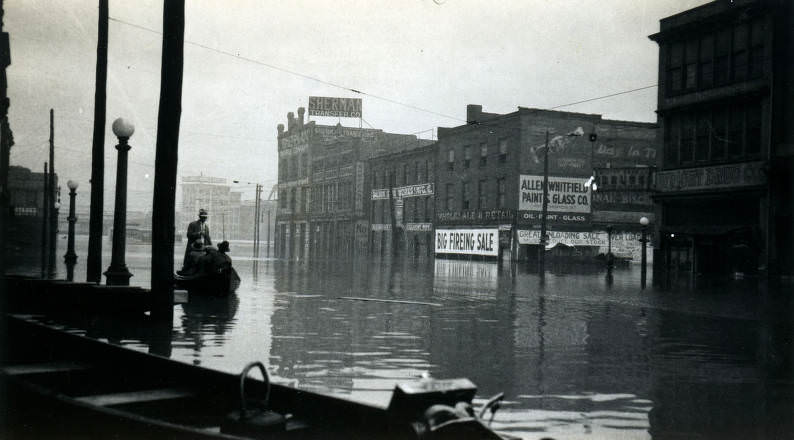
During the period of December 20-28, 1926, it was one of the wettest periods in Nashville’s history, with more than 10 inches of rainfall measured, making December, 1926, the rainiest December on record. By January 1927, the Cumberland River at Nashville had overflowed its levees by more than fifty-six feet, which was more than 16 feet above flood stage. The resulting flood was the most severe to hit the city since 1893. Water reached as far inland as Third Avenue, with 60 square blocks under water. Before the water receded, two persons were killed, more than 10 persons were left homeless, and business losses escalated into the millions of dollars. The Ryman Auditorium was pressed into use as a shelter, along with two National Guard armories and an American Legion post. A series of dams were built since those years by the U.S. Army Corps of Engineers, including Old Hickory Dam (1954) on the Cumberland and Percy Priest Dam (1966) on Stones River, providing river controls to help prevent flooding.


